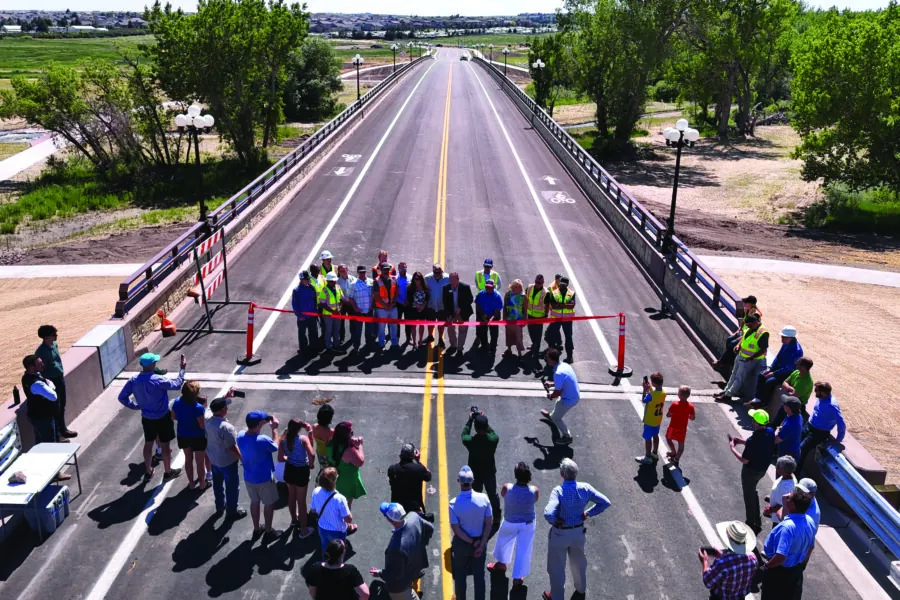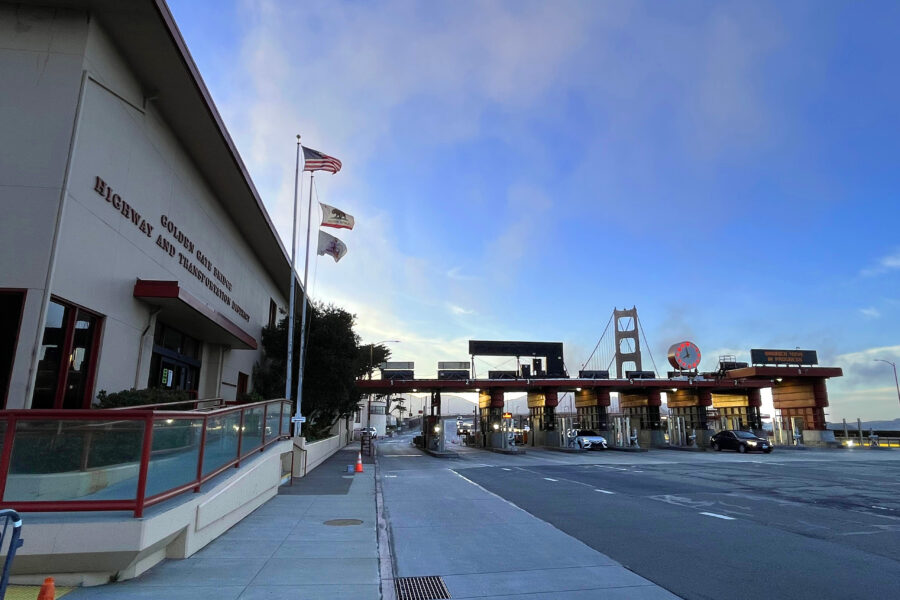MDOT To Bring Traffic Relief Through Progressive P3 and Managed Lanes

According to the Maryland Department of Transportation (MDOT), drivers experience seven to 10 hours of traffic congestion on I-495 and I-270 every day.
The National Capital Region is one of the most congested areas in the country. And projections show that delays could only get worse – increasing congestion by 70% by the year 2040.
Traffic relief is needed sooner rather than later to help improve the driver experience. This is especially necessary for the individuals and businesses that rely on these corridors daily for mobility and economic development.
Maryland Department of Transportation’s (MDOT) Op Lanes, which includes the New American Legion Bridge I-270 to I-70 Traffic Relief Plan, was developed to provide this traffic relief. It is envisioned to be a regional network of High Occupancy/Toll (HOT) lanes (sometimes called managed lanes or express toll lanes) with integrated transit service that would reduce travel times, increase trip reliability, improve safety and encourage ride-sharing and transit ridership in the region.
Traffic Relief Can Improve Quality of Life and Regional Growth Opportunities
Congestion impacts the quality of life for people dependent on I-495 and I-270 and local feeder roads to travel locally and regionally. What’s more, congestion stifles growth for the region by making it difficult for businesses to operate efficiently as they transport goods and provide services.
Like many others, MDOT faces significant funding shortfalls, leaving it unable to adequately address congestion and meet aging infrastructure needs. The state simply cannot afford to replace the American Legion Bridge—a notorious regional bottleneck—without canceling or delaying other desperately needed projects.
Due to the large and complex nature of Op Lanes Maryland, the existing highway system, land uses, and travel patterns in the region, improving congestion through traditional capital improvement delivery methods can prove to be challenging and expensive. And even with alternative delivery methods, such as public-private partnerships (P3), managing risk for the roadway owner, private developers, and contractors on a large-scale project like this one can prove to be a challenge.
MDOT and the people of the National Capital Region need a solution that reduces congestion while remaining within budgetary limitations, all while managing risks for all parties involved.
The result?
Relieving congestion can increase community growth, improve quality of life and improve the experience for all facility users – individual drivers, carpoolers, transit riders, pedestrians and others.
A Better Journey with Progressive Public-Private Partnership
MDOT found a promising path forward in progressive public-private partnerships (P3) and privately operated managed lanes and engaged RS&H to help them deliver this project.
For decades, RS&H has served owners such as MDOT, FDOT, and VDOT as a trusted advisor on highway P3 projects across the nation including I-595 and I-4 in Florida, I-66, I-395 and Fred Ex in Virginia.
This model continues to be one of the preferred methods in delivering managed lanes and has proven to improve mobility while simultaneously facilitating economic growth in heavily congested urban and suburban communities.
The P3 delivery method continues to evolve in the U.S. transportation market as owners seek to leverage the latest project innovations and refine their procurement processes to better address risk on large-scale projects.
In Maryland, Op Lanes will deliver improvements along the I-495 and I-270 corridors, implementing dynamically priced managed lanes to address congestion along these highways in Montgomery and Frederick Counties and build a new American Legion Bridge.
This historic, multi-billion-dollar project, however, is not your typical highway P3 project; instead, it is being delivered utilizing a progressive, Project Delivery Agreement (PDA).
RS&H is serving as the lead for MDOT’s P3 Program General Engineering Consultant (GEC) along with our partners WSP and Whitman Requardt & Associates. RS&H is tasked with providing project management, procurement, commercial, technical engineering, and tolling and technology advisory services to MDOT as it works collaboratively with the developer to deliver the first phase of the project.
The GEC team also includes experts focused on public relations, community engagement and equity, civil rights, racial justice, environmental justice and equal opportunity.
Accelerating and Future-Proofing Projects Through Innovation
The progressive P3 approach allows Maryland to accelerate the project without public funding having to cover upfront costs. While the state still owns the roads, it will be the private partner’s job to help operate and maintain them. The existing public funding stays available for other transportation projects and the managed lanes will provide a future revenue source for the developer and the state.
This joint development approach involves selecting a developer earlier in the process, prior to a NEPA Record of Decision, and allows MDOT and its developer to reduce key project risks such as utilities, governmental approvals and right of way acquisition, prior to finalizing a price and schedule.
The PDA process also allows MDOT and its developer to collaborate on coordination with third parties that are impacted along the corridor such as the National Park Service, the Maryland-National Capital Park and Planning Commission as well as other key stakeholders such as utilities and permitting agencies.
This proactive, collaborative approach aims to reduce:
- Cost overruns
- Impacts to adjacent properties
- Delays during construction that can prove extremely costly and hard to work around, particularly on projects of this scale and complexity
When specifying and overseeing the developer’s design of the managed lanes, RS&H and the GEC team will draw on experience from implementing similar projects across the country to ensure the latest advancements are used. All while staying mindful to future-proofing the project so that over the 50-year term of this agreement, the technology used in the lanes is adaptable and can evolve.
The technology of today won’t be the technology of tomorrow. With the fast-paced rate of change with technology in mind, RS&H’s team will partner with MDOT to set requirements and implement processes that allow for continued adaptation of technology and business approaches.
Build on Lessons Learned to Offer Better Travel Choices
RS&H and the GEC team is working hard with MDOT and the development team to reduce travel times in this critical traffic chokepoint and deliver better travel choices to everyone in the region.
Working with our clients on innovative and groundbreaking projects such as this has given RS&H a unique perspective and level of expertise. Our clients benefit from valuable lessons learned to help fine-tune the approach on new progressive alternative delivery opportunities.
We’re honored to serve not only as a technical expert, but also as a guide to owners such as MDOT through the P3 procurement, implementation, and delivery process.
Reach out to Bryan Kendro at Bryan.Kendro@rsandh.com to learn how RS&H can help bring your next public-private partnership or managed lanes project from a pressing need to reality.




